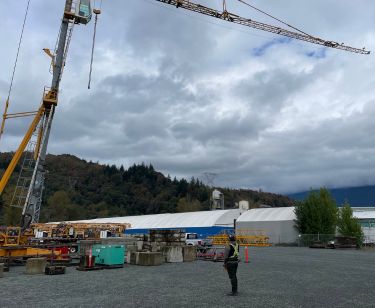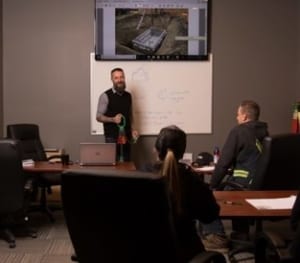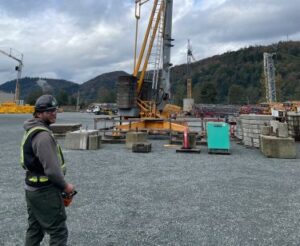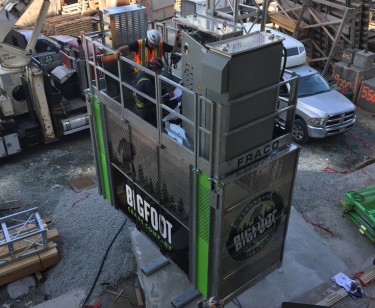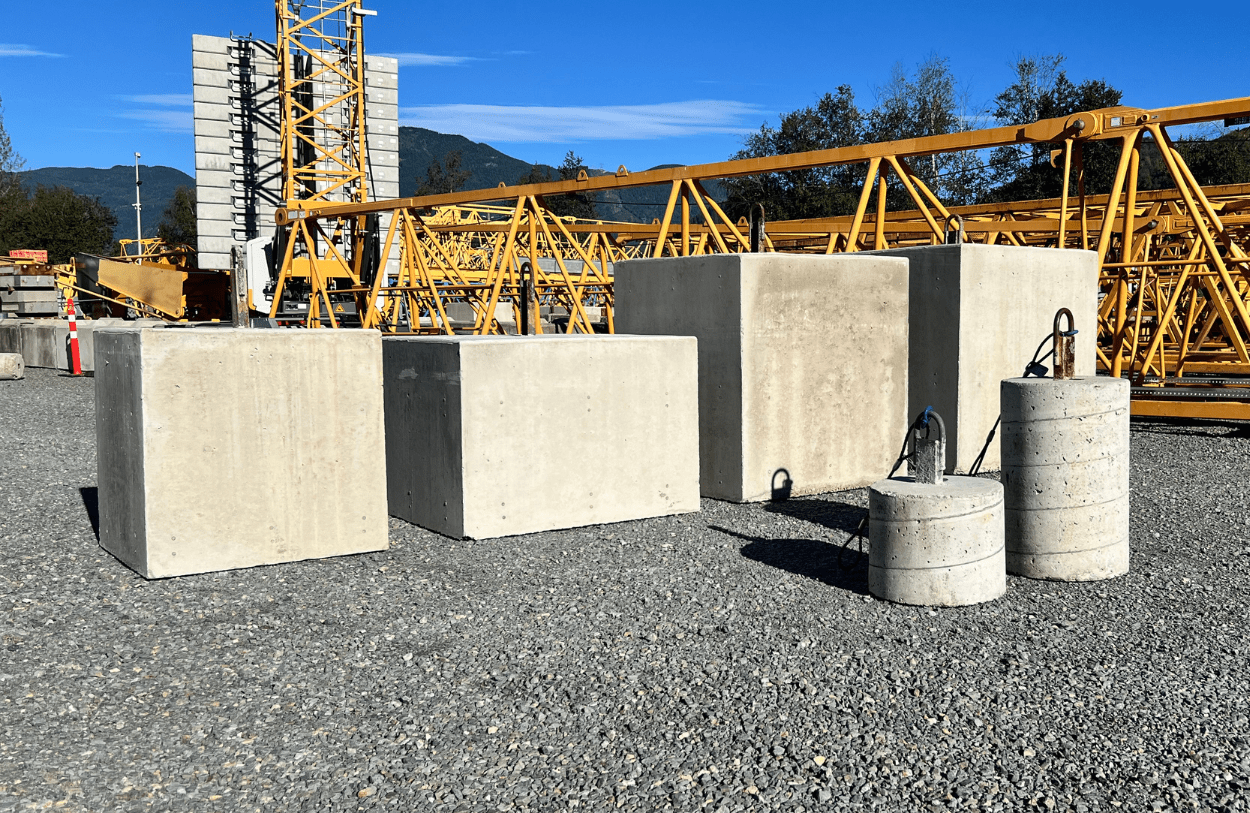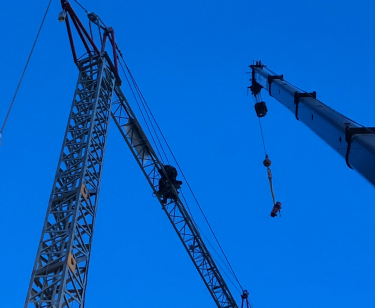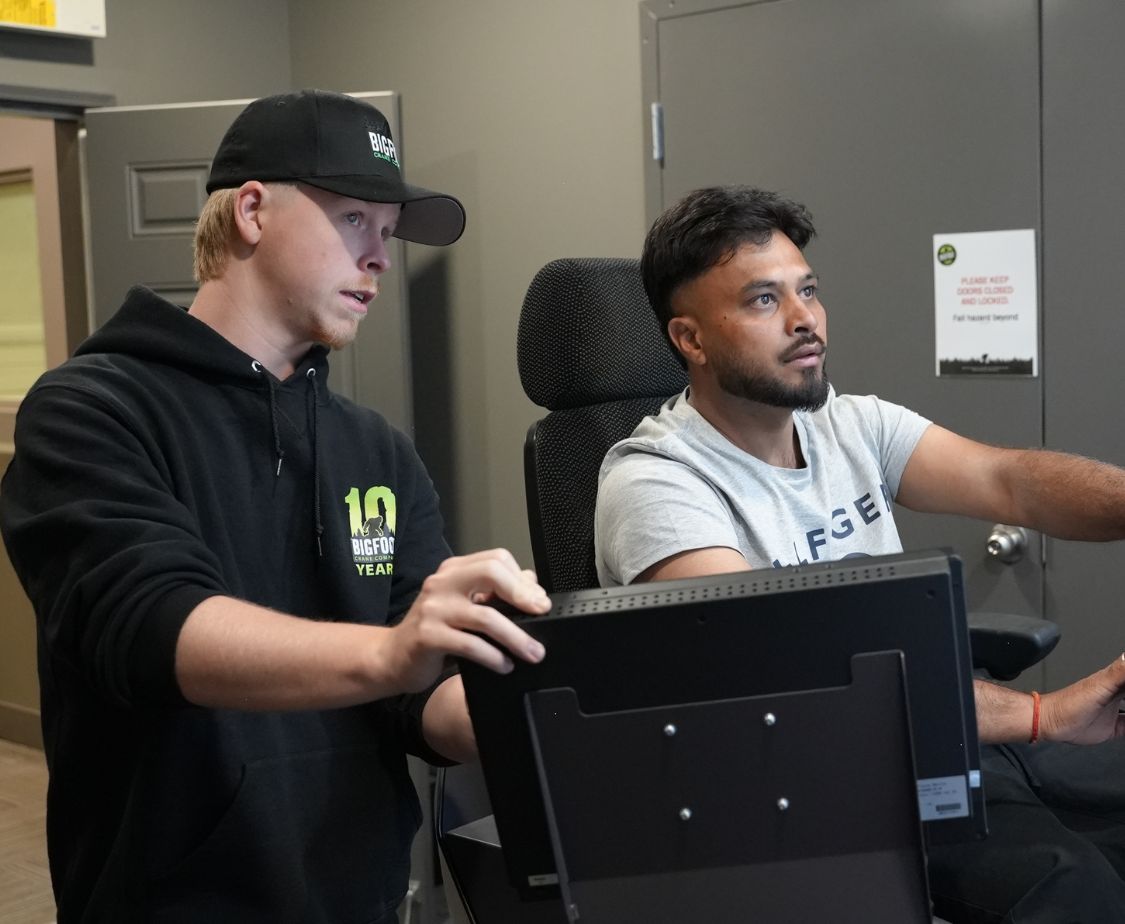Skilled crane operators are in high demand as construction projects continue to grow. Operating a self-erecting crane takes precision, awareness, and the right training to handle heavy loads safely. Mistakes can lead to costly delays or accidents, making proper instruction necessary for anyone looking to succeed in this field. Learning the right techniques boosts efficiency and opens doors to better job opportunities. We offer hands-on training designed to build confidence and skill at Bigfoot Academy. Completing our certified program provides a competitive edge, helping graduates secure well-paying jobs and advance in their careers with the knowledge needed to perform safely.
Understanding Self-Erecting Cranes: What Makes Them Unique?
Self-erecting cranes offer a level of flexibility and efficiency that sets them apart from other types of lifting equipment. Unlike traditional tower cranes, these cranes feature a hydraulic or electric system that allows them to unfold and extend without the need for complex assembly. This design reduces setup time, making them a practical choice for projects that require quick mobilization. Their compact footprint allows them to fit into tight spaces, making them ideal for urban environments where space is limited. Operators can control them remotely, allowing for precise movements while keeping the job site safe and efficient.
Unlike mobile cranes, which require extensive maneuvering, self-erecting cranes stay in one position and provide continuous lifting capabilities. This stability ensures that loads can be moved smoothly without the delays associated with repositioning equipment. Their ability to rotate 360 degrees enhances operational efficiency, allowing materials to be placed exactly where they are needed without excessive adjustments.
Advantages in Urban and Confined Spaces
Construction sites in city centers often have limited room for large cranes, making self-erecting models a preferred solution. These cranes can be set up in narrow spaces between buildings or on smaller lots where traditional cranes would be impractical. Their lightweight structure minimizes the need for extensive foundation work, reducing costs and installation time. Since they operate quietly, they cause less disruption in residential and commercial areas, making them an excellent choice for projects with strict noise regulations.
Where Self-Erecting Cranes Are Used
The construction industry relies on self-erecting cranes for residential, commercial, and infrastructure projects. Homebuilders use them for multi-story housing developments, while contractors utilize them for mid-sized commercial buildings. Infrastructure projects such as bridges and utility installations also benefit from their efficiency.
Their growing popularity is driven by the increasing need for adaptable lifting solutions. As cities expand and job sites become more constrained, self-erecting cranes continue to provide a reliable way to move materials efficiently. With proper training, operators can maximize their potential, ensuring that projects stay on schedule and within budget.
Why Proper Training is Essential for Self-Erecting Crane Operators
Operating a self-erecting crane requires skill, awareness, and a clear understanding of the equipment. Without proper training, even a small mistake can lead to serious accidents. A load positioned incorrectly can shift unexpectedly, putting workers and materials at risk. Electrical hazards, unstable ground conditions, and miscommunication between operators and ground crews create additional dangers on a job site. Crane operator training teaches operators how to recognize these risks and handle them before they become a problem.
Understanding load limits, balance points, and operational controls makes every lift safer. An untrained operator might overload the crane, increasing the chances of mechanical failure or tipping. A trained professional knows how to assess each lift, make adjustments, and respond to unexpected conditions. Learning the right techniques reduces the risk of equipment damage, which prevents costly repairs and project delays.
Legal and Compliance Requirements
Construction sites follow strict safety regulations, and crane operation is no exception. North American laws require operators to complete training before handling heavy machinery. The Occupational Safety and Health Administration (OSHA) in the United States enforces standards that keep job sites safe. Canada follows similar guidelines through organizations like the Canadian Centre for Occupational Health and Safety (CCOHS). Crane operator training programs help operators meet these legal requirements, ensuring that projects remain compliant and free from penalties.
Certification proves that an operator has met industry standards. Most construction companies will not hire someone without the proper credentials. A certified operator understands equipment inspections, emergency procedures, and safe lifting techniques. Employers value this knowledge because it reduces liability and keeps operations running smoothly.
Workplace Efficiency and Productivity
Trained operators move materials with accuracy, keeping projects on schedule. A self-erecting crane can lift loads quickly, but only when used correctly. Knowing how to position the crane, adjust the boom, and control movements makes each lift more efficient. Mistakes slow down progress, leading to wasted time and additional costs.
A well-trained operator communicates clearly with ground crews. Hand signals, radio commands, and visual awareness keep the entire team coordinated. This level of teamwork prevents confusion and reduces downtime. Training also helps operators handle unexpected challenges, such as shifting weather conditions or last-minute changes to the lift plan. A confident operator makes adjustments without hesitation, preventing unnecessary delays.
Career Benefits of Proper Training
Companies look for crane operators who bring skill and reliability to the job. Completing a certified training program gives operators an advantage when applying for positions. Many employers prefer candidates who have already gone through professional instruction. Certification proves that an operator is prepared to work safely and efficiently.
A well-trained operator can expect steady employment. Construction projects always need skilled professionals to handle lifting operations. Those who demonstrate strong performance can move into higher-paying roles. Supervisory positions, specialized crane operations, and long-term contracts become more accessible with experience.
Investing in training opens doors to better job opportunities and long-term career growth. Learning the right techniques not only improves safety and efficiency but also creates a path toward a rewarding career in the construction industry.
What to Expect in Bigfoot Crane’s Self-Erecting Crane Operator Course
Our self-erecting crane operator course provides a complete learning experience, combining classroom instruction with hands-on practice. Operators gain the knowledge and skills needed to handle cranes safely, efficiently, and in compliance with industry standards.
Classroom Training
A strong foundation in crane operation begins with understanding the principles behind it. Classroom sessions cover key topics such as safety regulations, industry requirements, and proper operating procedures. Learning about weight distribution, load charts, and stability factors ensures that operators can make informed decisions on the job.
Mechanical knowledge is another important focus. Self-erecting cranes have unique features that set them apart from other lifting equipment. Understanding how these cranes function, including hydraulic systems, electrical components, and control mechanisms, allows operators to troubleshoot minor issues and operate with confidence.
Hands-On Practical Training
Theory alone is not enough to prepare someone for real-world crane operation. Practical training gives operators the chance to apply what they’ve learned in a controlled setting. Working with self-erecting cranes under expert supervision builds familiarity with setup, load handling, and on-site assessments.
Every job site presents different challenges, and knowing how to adjust to different conditions is essential. Training includes exercises that simulate actual job scenarios, such as lifting materials over obstacles, working in confined spaces, and responding to shifting weather conditions. Operators also learn how to conduct pre-operational inspections, ensuring that equipment is in safe working order before use.
Certification and Compliance
Completing our training program gives operators the credentials needed to work legally and professionally. Certification demonstrates that an operator meets industry-recognized standards and is prepared for the demands of the job.
Meeting compliance requirements keeps job sites safe and operations running smoothly. Employers trust certified operators to handle cranes correctly, reducing risks and ensures that projects stay on track. Our course equips operators with everything needed to step onto a job site fully prepared and ready to work.
Essential Skills Gained from Our Self-Erecting Crane Training
Operating a self-erecting crane starts long before lifting a load. Proper setup plays a key role in safety and performance. Knowing how to position and stabilize the crane on different terrain prevents tipping and structural stress.
Site assessments identify potential hazards before work begins. Operators learn how to evaluate ground conditions, check for overhead obstructions, and ensure enough clearance for safe operation. Understanding how wind and weather affect stability allows operators to make necessary adjustments. Pre-operational inspections confirm that all mechanical and safety systems function properly, reducing the risk of unexpected failures during lifts.
Load Handling and Rigging Techniques
Lifting operations require more than just moving loads from one point to another. Understanding weight distribution and reading load charts help operators determine safe lifting capacities. Incorrect calculations can lead to overloading, which increases strain on the crane and poses serious risks.
Rigging knowledge is just as important. Selecting the right slings, shackles, and hooks ensures that loads remain secure during movement. Operators also learn proper attachment methods and lifting angles to prevent shifting or slipping. Training covers how to inspect rigging equipment for wear and damage, keeping lifting operations safe and efficient.
Mastering Crane Maneuvers and Controls
Crane movement varies depending on site conditions. Tight spaces, uneven terrain, and unpredictable weather can create challenges that require skill and awareness. Training includes practical exercises that teach operators how to control the crane smoothly while keeping loads stable.
Wind and load swing affect balance, making precise maneuvering essential. Techniques for minimizing swaying and adjusting to sudden gusts of wind improve control and reduce strain on both the crane and its components. Learning how to navigate obstacles, work around buildings, and operate safely in congested areas prepares operators for real-world job sites.
Safety and Emergency Procedures
Hazards exist on every job site, but proper training helps operators recognize and respond to risks before they become serious problems. Learning how to identify mechanical warning signs, unstable loads, or environmental risks leads to better decision-making during operations.
Emergency situations require quick thinking and the right response. Training covers emergency stop procedures, communication with ground crews, and how to safely shut down a crane if something goes wrong. Simulated scenarios prepare operators to handle real-life incidents with confidence, reducing the risk of injury and equipment damage.
Basic Maintenance and Troubleshooting
Daily inspections keep cranes in working condition and help prevent unexpected breakdowns. Learning how to check hydraulic systems, electrical components, and structural parts allows operators to catch minor issues before they become costly repairs.
Understanding warning signals such as unusual noises, sluggish movement, or abnormal vibrations helps operators know when a crane needs attention. Knowing when to report mechanical concerns or perform basic troubleshooting improves overall efficiency and keeps worksites running smoothly.
Training provides the knowledge and hand-on experience needed to handle self-erecting cranes safely and efficiently. Skills gained in this program help operators work confidently, reduce risks, and contribute to successful project completion.
Why Choose Bigfoot Crane for Your Crane Operator Training?
Industry-Experienced Instructors
Learning from professionals who have spent years on job sites makes a difference. Our instructors bring real-world knowledge that goes beyond textbooks, sharing practical techniques that improve both safety and efficiency. We focus on hand-on lessons based on actual industry challenges, giving our students the confidence to handle real job site conditions.
Hands-On Training with Modern Equipment
Training on self-erecting cranes used in today’s workforce prepares operators for real job demands. We provide access to modern equipment, allowing students to learn controls, load management, and maneuvering techniques that match industry expectations. Practical exercises reinforce these skills, making it easier to transition from training to active job sites.
Commitment to Safety and Excellence
Knowing how to operate a crane is only part of the job. Understanding best practices and industry regulations creates a safer work environment for everyone. Our training covers hazard awareness, emergency procedures, and operational techniques that reduce risks. We make sure every graduate leaves with the skills and knowledge needed to meet safety requirements in any work setting.
Career Support and Job Placement Assistance
Completing training is a major step, but finding work can be just as important. We offer career support services, providing guidance on job searches, resume building, and interview preparation. Our connections within the industry create networking opportunities that help students take the next step in their careers. Employers recognize Bigfoot Crane training as a strong foundation, making our graduates stand out in the hiring process.
Take the Next Step Toward Your Crane Operator Career
Gaining the right training sets the foundation for success in crane operation. Our program provides hands-on experience, expert instruction, and industry-recognized certification to help you stand out. Start building a rewarding career with skills that employers value. Enrollment is open now. Visit our website or contact us to learn more about our courses, schedules, and how to get started.
